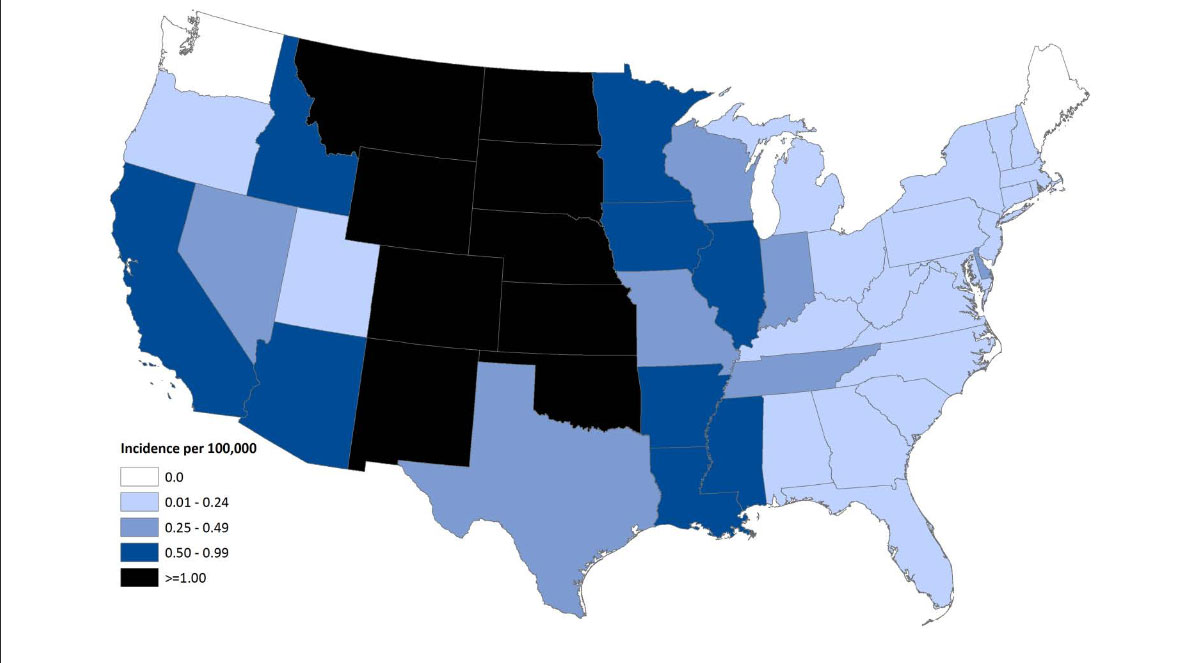West Nile Cases Down in 2013

There were fewer reported cases of West Nile virus in the United States in 2013 compared with the previous year, according to a new report from the Centers for Disease Control and Prevention.
In 2013, there were 2,469 reported U.S. cases of West Nile virus, compared to 5,674 cases reported in 2012, when there was a large outbreak of the disease, the CDC said.
Of the cases reported in 2013, 1,267 were severe, defined as causing inflammation in the brain or surrounding tissues. Cases peaked in early September, and 90 percent of the people infected with the virus became ill between July and September, the report said.
Among the severe cases that caused neurological symptoms (called "neuroinvasive" cases), more than half (51 percent) occurred in just six states: California, Texas, Colorado, Illinois, North Dakota and Oklahoma. The states with the highest rates of neuroinvasive cases relative to their populations were North Dakota, South Dakota, Nebraska and Wyoming. [10 Deadly Diseases That Hopped Across Species]
Still, severe cases of West Nile remain rare: In 2013, the rate of neuroinvasive cases was four cases per 1 million people.
West Nile virus is most commonly spread by mosquitoes. About 70 to 80 percent of people infected with the virus show no symptoms, but about 20 percent develop a fever and other symptoms — such as headaches, body aches and vomiting — and less than 1 percent develop neurological illness, according to the CDC.
Because most people infected with West Nile do not develop symptoms, or do not feel sick enough to go to the doctor, the number of actual cases is likely much higher than the number of reported cases, according to the CDC. Taking into account underreporting, there may have been between 38,000 and 88,000 actual West Nile cases in the United States in 2013, the report said.
Sign up for the Live Science daily newsletter now
Get the world’s most fascinating discoveries delivered straight to your inbox.
The number of West Nile cases varies from year to year due many factors — including the weather, number of birds that host the virus (when it's not in mosquitoes), the abundance of mosquitoes that spread the virus and human behavior such as the use of insect repellent — all of which can affect when and where outbreaks occur, the CDC said.
"This complex ecology makes it difficult to predict how many cases of disease might occur in the future and where they will occur," the report said.
To prevent infection with West Nile and other diseases spread by mosquitoes and ticks, the CDC recommends that people use insect repellant and wear protective clothing.
Follow Rachael Rettner @RachaelRettner. Follow Live Science @livescience, Facebook & Google+. Original article on Live Science.

Rachael is a Live Science contributor, and was a former channel editor and senior writer for Live Science between 2010 and 2022. She has a master's degree in journalism from New York University's Science, Health and Environmental Reporting Program. She also holds a B.S. in molecular biology and an M.S. in biology from the University of California, San Diego. Her work has appeared in Scienceline, The Washington Post and Scientific American.
Measles has long-term health consequences for kids. Vaccines can prevent all of them.
100% fatal brain disease strikes 3 people in Oregon









